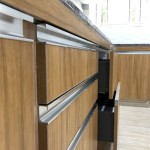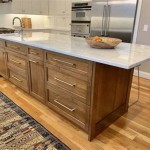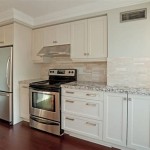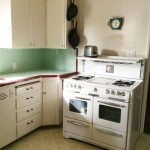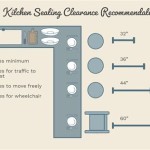Kitchen Cupboards Over Sink: Design, Functionality, and Considerations
Kitchen design frequently revolves around maximizing space and optimizing functionality. The strategic placement of various elements, including appliances, countertops, and storage solutions, contributes significantly to the overall efficiency and aesthetic appeal of the kitchen. Among these elements, the implementation of kitchen cupboards over the sink warrants careful consideration. This configuration, while seemingly straightforward, involves a complex interplay of design principles, functional requirements, and user preferences.
The placement of cupboards above the sink serves a dual purpose: it provides valuable storage space in an area that might otherwise be underutilized and it helps to define the designated sink area, creating a focal point within the kitchen. However, the success of this design element hinges on a meticulous assessment of factors such as dimensions, materials, accessibility, and the overall aesthetic coherence of the kitchen.
Optimizing Storage Capacity and Accessibility
One of the primary benefits of installing kitchen cupboards above the sink is the increased storage capacity that results. This space is particularly well-suited for storing items frequently used at or near the sink, such as dish soap, sponges, cleaning supplies, hand towels, and frequently used dishware. The proximity of these items to the point of use streamlines workflow and enhances convenience. However, maximizing the utility of this storage hinges on careful planning and organization.
The dimensions of the cupboards should be carefully considered to accommodate the intended contents. Shallow cupboards, for example, are ideal for storing smaller items and preventing them from being lost in the back. Deeper cupboards can accommodate larger items, but may require internal organization solutions such as pull-out shelves or tiered storage systems to ensure easy access. The height of the cupboards above the countertop is also critical. Adequate clearance must be provided to allow for comfortable use of the sink, while also ensuring that the cupboards remain easily accessible without requiring excessive reaching or straining.
Accessibility is paramount. The type of door chosen for the cupboards can significantly impact ease of use. Standard hinged doors require sufficient clearance to swing open fully, which may not be feasible in smaller kitchens. Alternatives such as sliding doors, bi-fold doors, or up-and-over lift-up doors can be more space-efficient and easier to operate in constrained environments. The hardware chosen for the doors, such as handles and hinges, should also be durable and ergonomically designed for ease of use.
Internal organization plays a crucial role in maximizing the effectiveness of the storage space. Installing adjustable shelves allows for customization to accommodate items of varying sizes. Wire racks and dividers can help to keep items organized and prevent them from shifting. Clear containers can be used to store small items and make them easy to identify. Proper lighting within the cupboards can also improve visibility and make it easier to find what is needed.
Material Selection and Durability Considerations
The choice of materials for kitchen cupboards above the sink is critical, given the potential for exposure to moisture and humidity. The area around the sink is inherently prone to splashes, spills, and condensation, which can damage materials that are not adequately moisture-resistant. Consequently, selecting durable and water-resistant materials is essential for ensuring the longevity and integrity of the cupboards.
Solid wood, while aesthetically pleasing and durable, is susceptible to warping, cracking, and discoloration if exposed to excessive moisture. If solid wood is chosen, it should be properly sealed and finished with a water-resistant coating. Engineered wood products, such as plywood and medium-density fiberboard (MDF), are often preferred for kitchen cabinetry due to their stability and resistance to moisture. These materials are less prone to warping and cracking than solid wood and can be finished with a variety of veneers, laminates, or paints to achieve the desired aesthetic.
The finishing material applied to the cupboards is equally important. Laminates are a popular choice due to their durability, water resistance, and ease of cleaning. They are available in a wide range of colors, patterns, and textures, allowing for versatile design options. Paint is another common finish, but it must be applied properly and maintained regularly to prevent chipping, peeling, and water damage. A high-quality, moisture-resistant paint is essential for kitchen cabinetry, particularly in areas prone to moisture exposure.
Hardware, such as hinges, handles, and drawer pulls, should also be selected for their durability and resistance to corrosion. Stainless steel and other rust-resistant materials are ideal for kitchen environments. The quality of the hardware can significantly impact the longevity and functionality of the cupboards. Inexpensive hardware may corrode or break down over time, requiring frequent replacement and potentially damaging the surrounding cabinetry.
Furthermore, consideration should be given to the potential for water damage resulting from leaks or plumbing issues. Installing a drip tray or liner beneath the sink can help to protect the bottom of the cupboard from water damage. Regularly inspecting the plumbing connections and addressing any leaks promptly can prevent more extensive damage to the cabinetry and surrounding structure.
Aesthetic Integration and Design Harmony
Beyond functionality and durability, the aesthetic integration of kitchen cupboards above the sink into the overall kitchen design is crucial. The cupboards should complement the existing cabinetry, countertops, and other design elements to create a cohesive and visually appealing space. The style, color, and finish of the cupboards should be carefully considered to achieve a harmonious and balanced aesthetic.
The style of the cupboards should align with the overall design theme of the kitchen. In a traditional kitchen, for example, raised-panel doors with decorative molding might be appropriate. In a modern kitchen, sleek, flat-panel doors with minimalist hardware might be preferred. The height and depth of the cupboards should also be proportional to the size and scale of the kitchen. Overly large or bulky cupboards can overwhelm a small kitchen, while undersized cupboards may appear insignificant in a large kitchen.
The color and finish of the cupboards should complement the existing color palette of the kitchen. Neutral colors, such as white, gray, and beige, are versatile and can be easily integrated into a variety of design schemes. Bold colors can be used to create a focal point or add visual interest, but they should be used sparingly and balanced with more neutral tones. The finish of the cupboards can also impact the overall aesthetic. A glossy finish can create a sleek and modern look, while a matte finish can provide a more understated and natural feel.
Lighting plays a critical role in enhancing the aesthetic appeal of the kitchen. Under-cabinet lighting can illuminate the countertop and sink area, providing both task lighting and ambient lighting. Recessed lighting can be used to highlight the cupboards and create a sense of depth and dimension. The type of lighting, the placement of the fixtures, and the color temperature of the bulbs should be carefully considered to achieve the desired effect.
The backsplash behind the sink can also contribute to the overall aesthetic integration of the cupboards. A well-chosen backsplash can tie together the various elements of the kitchen, creating a cohesive and visually appealing space. The material, color, and pattern of the backsplash should complement the cupboards, countertops, and other design elements. Glass tiles, ceramic tiles, and natural stone are all popular choices for kitchen backsplashes.
In conclusion, the thoughtful implementation of kitchen cupboards above the sink necessitates a comprehensive understanding of storage optimization, material selection, and aesthetic integration. By carefully considering these factors, homeowners and designers can create a functional, durable, and visually appealing kitchen space that meets their specific needs and preferences.

Pin On House 2

Kitchen Windows Over Sink 25 Design Decor Ideas Window

Cabinets Over Kitchen Sink Transitional

The Problem With White Kitchen Cabinets

Options For A Kitchen Design With No Window Over The Sink Victoria Elizabeth Barnes

Layout Ideas Above Sink And Cooker Kitchen Decor Remodel Design Small

Drying Racks Above Sink Inside Kitchen Cabinet Cabinets Interior

Cabinets Over Kitchen Sink Cottage Bhg

How To Paint Kitchen Cabinets In 7 Simple Steps

Cabinets Over Sink Kitchens Without Windows No Window Finish Kitchen
Related Posts

